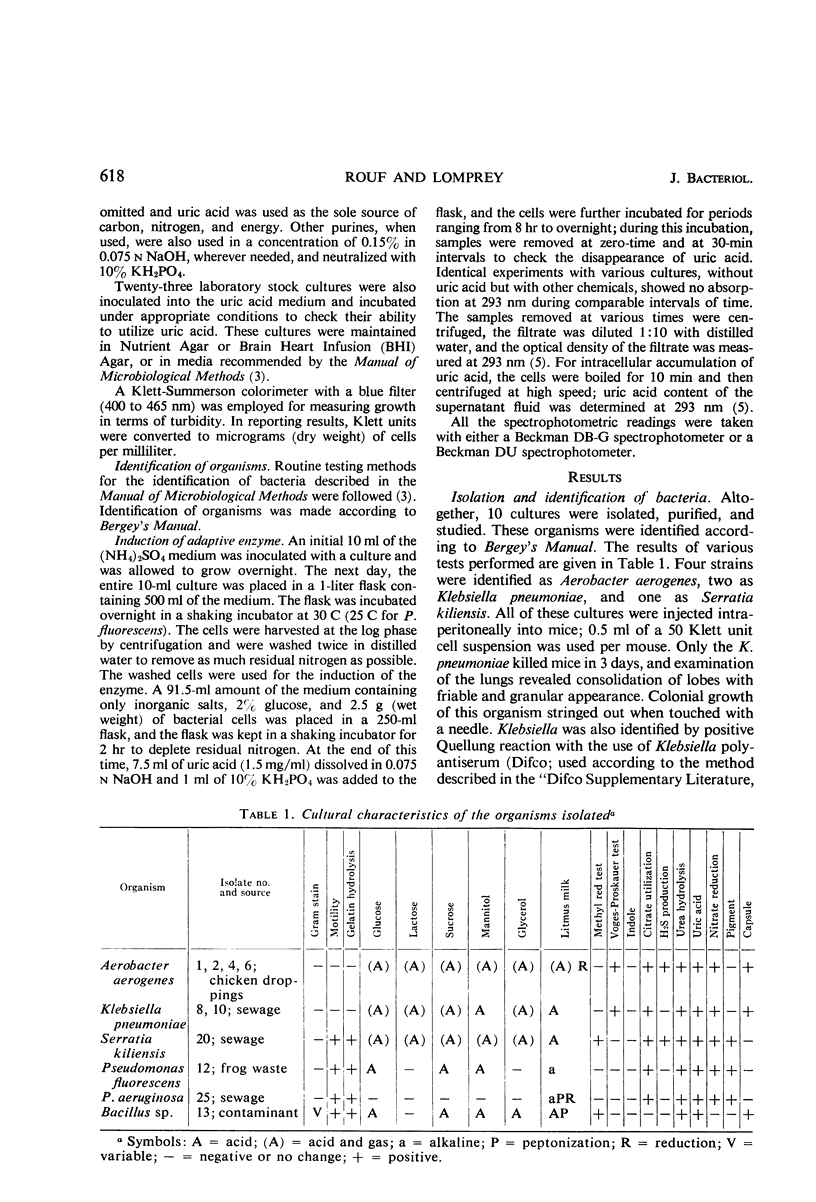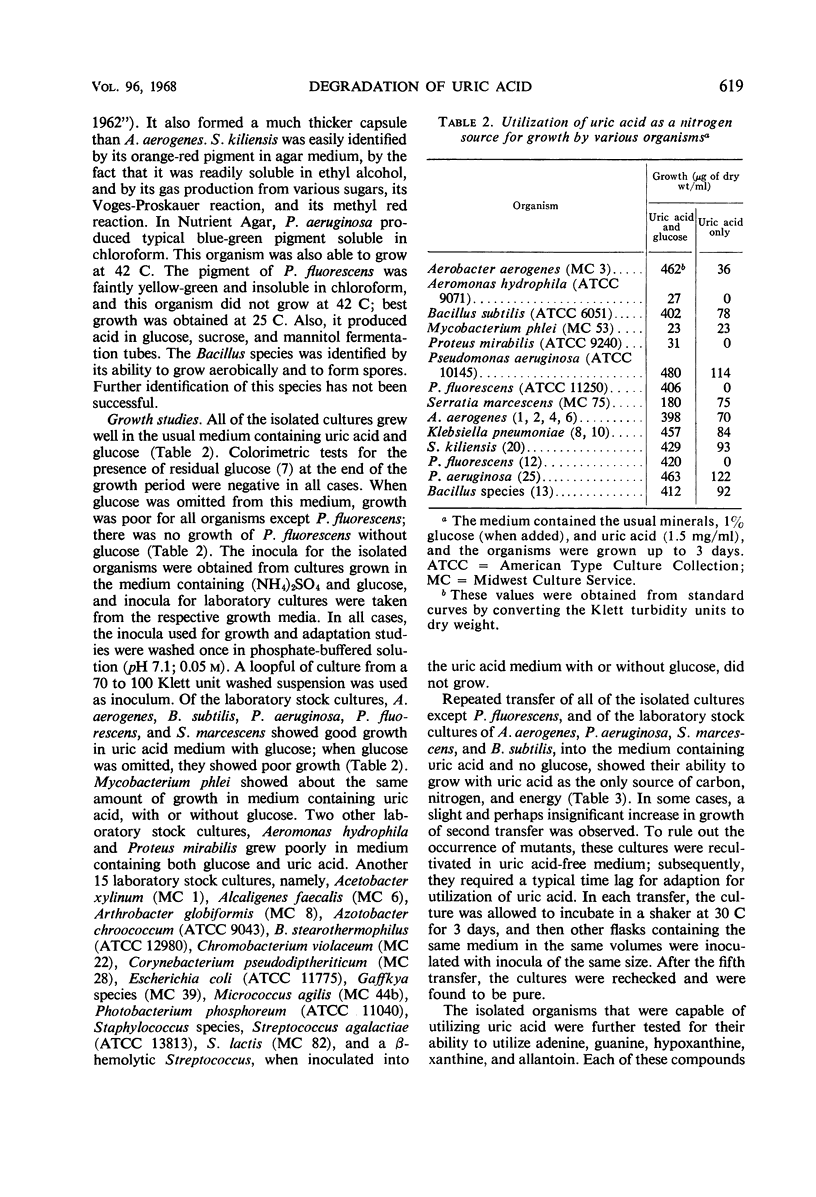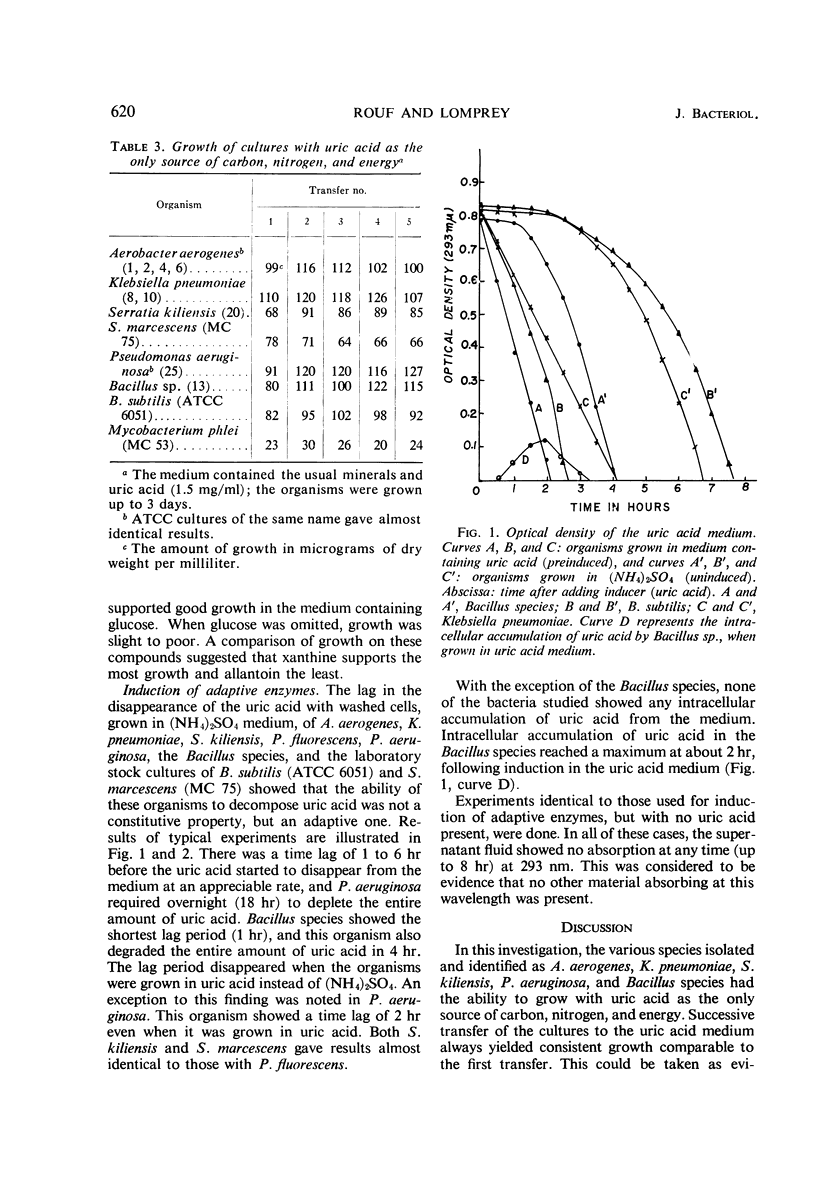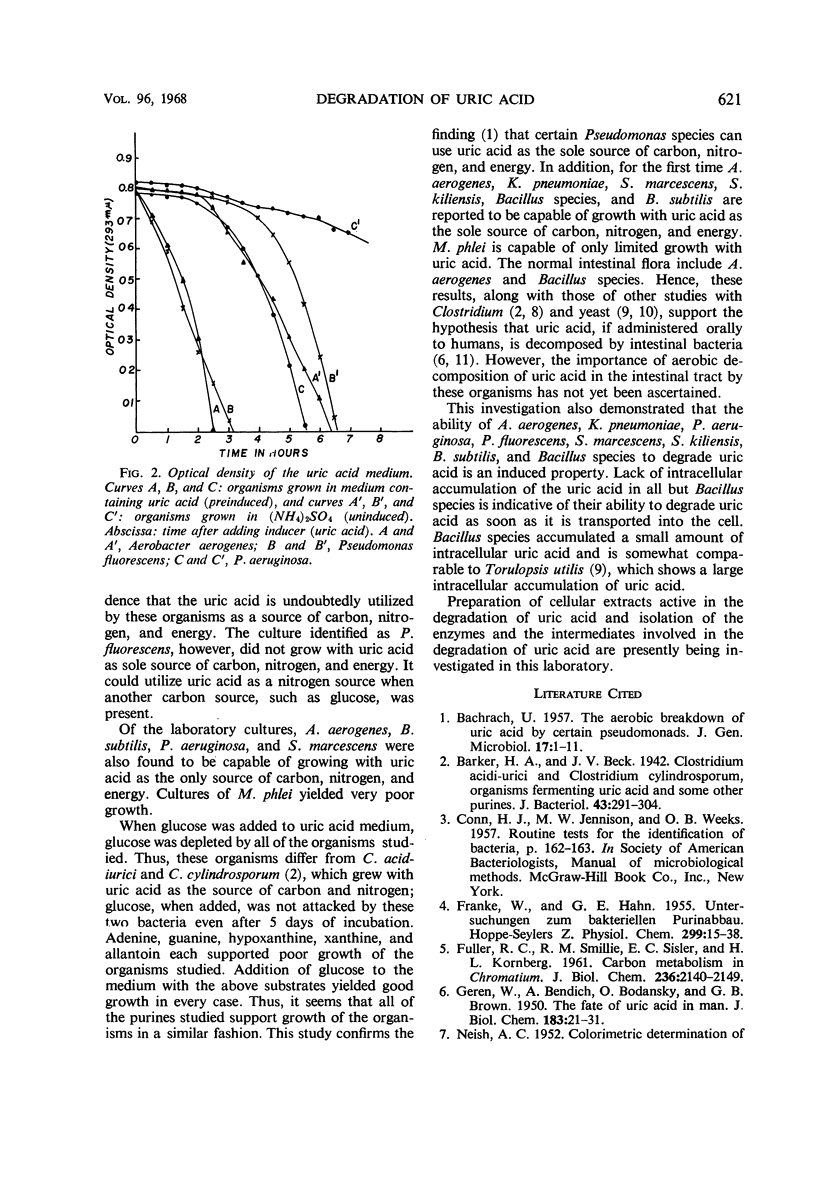Abstract
We have isolated and identified nine cultures of aerobic bacteria capable of growing on an elective medium containing uric acid as the only source of carbon, nitrogen, and energy. Four of these cultures were identified as Aerobacter aerogenes, two as Klebsiella pneumoniae, and the remainder as Serratia killiensis, Pseudomonas aeruginosa, and Bacillus species. Another culture identified as P. fluorescens required both glucose and uric acid for growth. When 23 laboratory stock cultures were inoculated into the uric acid medium, A. aerogenes, B. subtilis, Mycobacterium phlei, P. aeruginosa, and S. marcescens were able to grow. These five cultures also grew when the uric acid was replaced with adenine, guanine, hypoxanthine, xanthine, or allantoin, but growth was poor. In all of these media, including the uric acid medium, addition of glucose along with the nitrogenous compounds yielded good growth. Induction experiments demonstrated that the ability of A. aerogenes, K. pneumoniae, P. aeruginosa, P. fluorescens, S. kiliensis, S. marcescens, B. subtilis, and Bacillus sp. to degrade uric acid is an induced property. Of these organisms, only Bacillus sp. accumulated a small amount of intracellular uric acid.
Full text
PDF





Selected References
These references are in PubMed. This may not be the complete list of references from this article.
- BACHRACH U. The aerobic breakdown of uric acid by certain pseudomonads. J Gen Microbiol. 1957 Aug;17(1):1–11. doi: 10.1099/00221287-17-1-1. [DOI] [PubMed] [Google Scholar]
- Barker H. A., Beck J. V. Clostridium acidi-uridi and Clostridium cylindrosporum, Organisms Fermenting Uric Acid and Some Other Purines. J Bacteriol. 1942 Mar;43(3):291–304. doi: 10.1128/jb.43.3.291-304.1942. [DOI] [PMC free article] [PubMed] [Google Scholar]
- FRANKE W., HAHN G. E. Untersuchungen zum bakteriellen Purinabbau. I. Uber den Harnsäureabbau durch Pseudomonas aeurginosa (Badt. pyocyaneum). Hoppe Seylers Z Physiol Chem. 1955;299(1):15–38. [PubMed] [Google Scholar]
- FULLER R. C., SMILLIE R. M., SISLER E. C., KORNBERG H. L. Carbon metabolism in Chromatium. J Biol Chem. 1961 Jul;236:2140–2149. [PubMed] [Google Scholar]
- RABINOWITZ J. C., BARKER H. A. Purine fermentation by Clostridium cylindrosporum. II. Purine transformations. J Biol Chem. 1956 Jan;218(1):161–173. [PubMed] [Google Scholar]
- ROUSH A. H., DOMNAS A. J. Induced biosynthesis of uricase in yeast. Science. 1956 Jul 20;124(3212):125–126. doi: 10.1126/science.124.3212.125. [DOI] [PubMed] [Google Scholar]
- ROUSH A. H., QUESTIAUX L. M., DOMNAS A. J. The active transport and metabolism of purines in the yeast, Candida utilis. J Cell Comp Physiol. 1959 Dec;54:275–286. doi: 10.1002/jcp.1030540310. [DOI] [PubMed] [Google Scholar]
- WYNGAARDEN J. B., STETTEN D., Jr Uricolysis in normal man. J Biol Chem. 1953 Jul;203(1):9–21. [PubMed] [Google Scholar]


